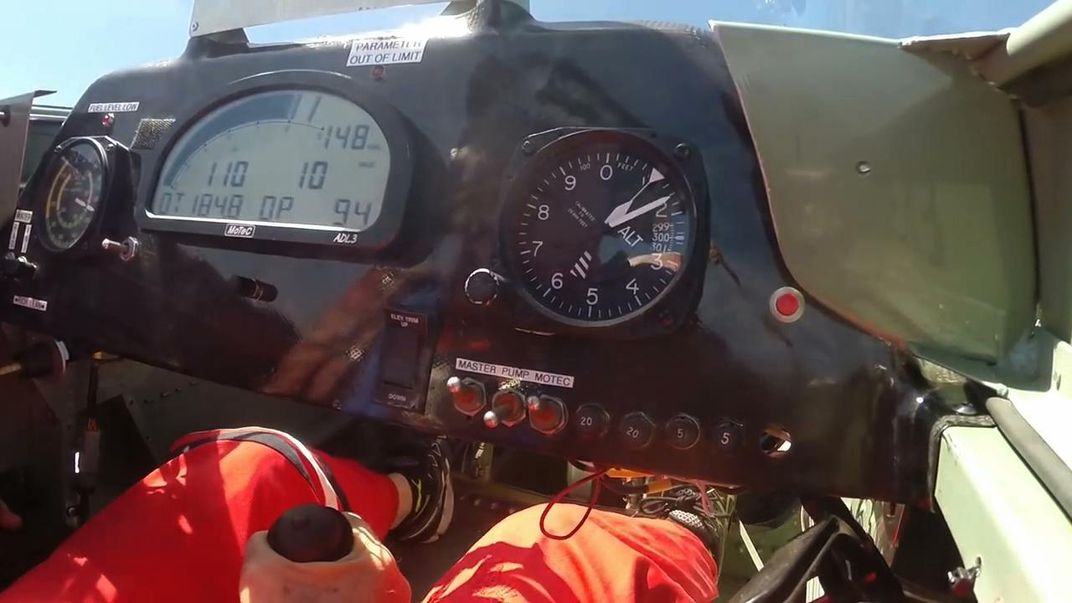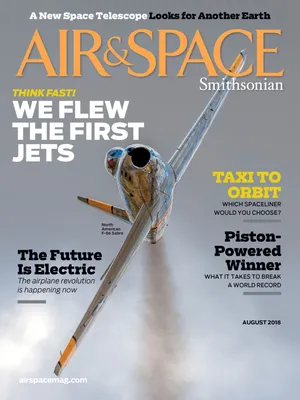Kitplane Sets New Time-to-Climb Record
This Harmon Rocket uses a rotary engine to get high fast.
/https://tf-cmsv2-smithsonianmag-media.s3.amazonaws.com/filer/fd/a9/fda928ee-7566-4e14-b9b5-56330d7c0dba/24a_aug2018_timetoclimbrecordframe127_live.jpg)
Dan Gray didn’t need a whole 15 minutes of fame—100 seconds was plenty. That’s how long it took Gray to pilot a highly-modified kitplane—an experimental Vans RV called a Harmon Rocket—from zero to 10,000 feet and straight into the record books. (Watch the video here.)
Gray’s company, Aviation F/X, was approached by Australian Harmon Rocket owner Russ MacFarlane, who, with help from his son Eric, was preparing the aircraft for an attempt on the time-to-climb record (for airplanes weighing about 1,100 to 2,200 pounds). Gray and the MacFarlanes started with the basics: Reducing weight by ripping out everything not critical to flight, including the wingtips, wheel pants, and passenger seat. They even replaced the stock tailwheel with a skateboard wheel.

But the real magic was from the firewall forward: The traditional Lycoming engine was replaced by a twin-rotor Mazda rotary mated to a rotor drive from a Bell 47 helicopter. MacFarlane is “a real lover of rotary engines,” says Gray, and saw an opportunity to promote them by using one to break a record. Despite the high power-to-weight ratio of a rotary engine, few airplanes fly with them today because they burn a lot of gas—except at wide-open throttle, says Gray, and that is how he planned to use it. The engine used a massive GT40 turbocharger, which crammed air in at more than twice atmospheric pressure, and a diet of pure methanol—typically used by race cars to cool the intake charge—to increase the engine power output from 150 hp to more than 600 hp, albeit for only a few seconds. In flight, with controls trimmed for climbing, the aircraft still put out 500 hp at 8,500 rpm.
In ground tests, the distinct scream of the rotary could be heard more than a mile away, and the engine was powerful enough to tow a truck with its parking brake on. To make sure the engine systems could handle the extreme angle of climb, the team mounted the airplane on a lifting-bed truck, inclined the bed 60 degrees, and ran the engine at full throttle.
Gray, who is also a 787 captain for United Airlines, has accumulated 35,000 hours of flight time in a vast array of aircraft and needed all that experience for this project. On one test flight, after a faulty oil line spit oil over the front of the canopy, he was forced to land looking backward. The final flight to 10,000 feet proved relatively uneventful, though, Gray admits, “It’s a challenging-flying airplane and a finicky motor. But it was only made to do one thing: climb.” At 100 seconds, the Harmon Rocket was a mere eight seconds behind the time-to-climb record set by a certain famous raceplane in 1972. Watch out, Rare Bear.
